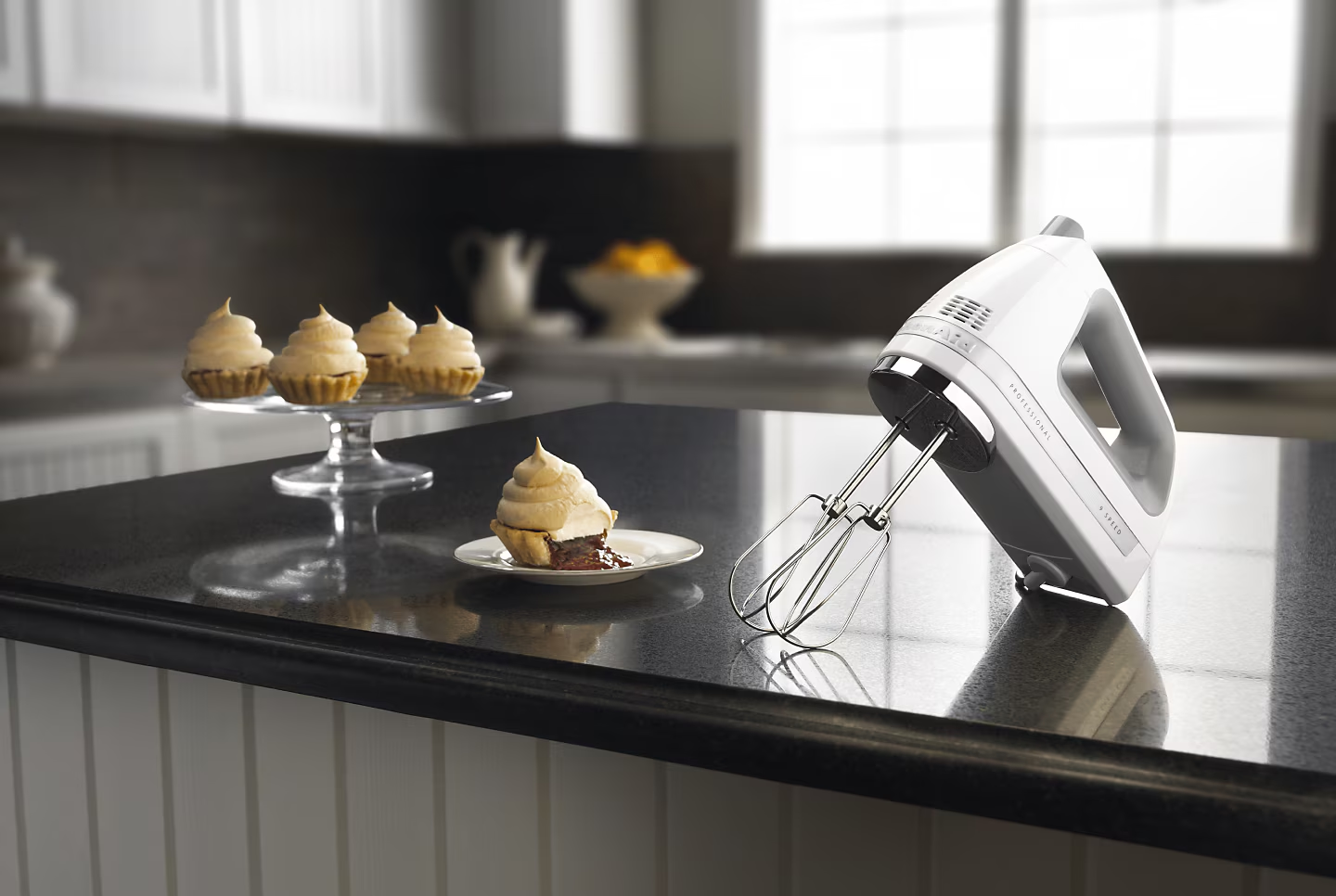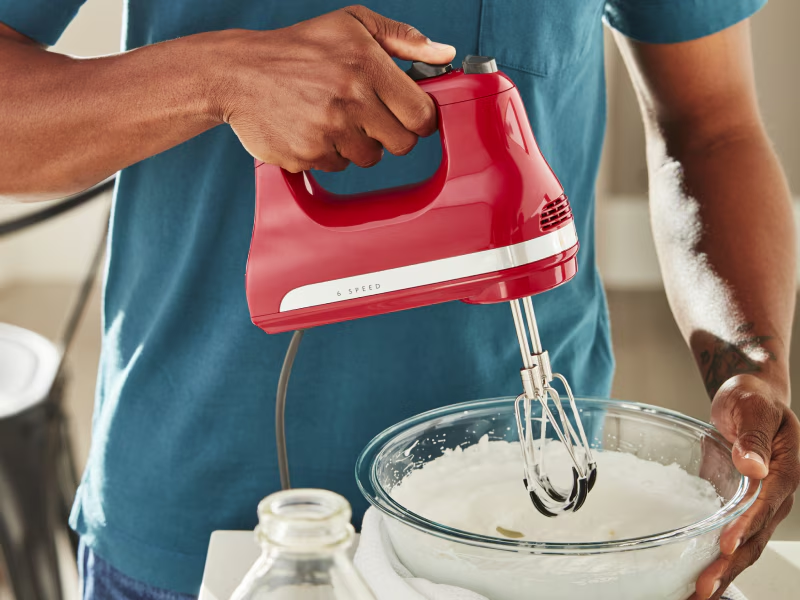Ever found yourself in a cloud of flour, wondering if there was a better way? Or maybe your whipped cream went from perfect peaks to a sad, buttery mess in a split second? You’re not alone. The secret often lies in your tool, and when it comes to a hand mixer, the number of speeds can feel like a confusing puzzle. So, let’s get right to it: How Many Speeds Do I Need On A Hand Mixer to truly conquer your kitchen creations? The answer isn’t just a number; it’s about understanding what each speed brings to the table.
Navigating the world of kitchen gadgets can be overwhelming. You see mixers with three speeds, some with five, and others boasting nine or more, plus a “Turbo” button. It’s easy to think that more is always better, but that’s not necessarily the case. The real goal is to find a mixer with a useful range of speeds that gives you precise control, from a gentle, slow stir to a powerful, high-speed whip. In this guide, we’ll break down everything you need to know, helping you move from confused shopper to confident baker. We’ll demystify the numbers, explore what each speed is used for, and ensure you pick the perfect partner for your culinary adventures.
The Speed Spectrum: What Do The Numbers Actually Mean?
Think of hand mixer speeds like the gears on a car. You wouldn’t start from a dead stop in fifth gear, and you wouldn’t try to merge onto the highway in first. Each speed has a specific purpose designed to give you the best results for different tasks. A good hand mixer offers a distinct, noticeable difference between each setting.
Low Speeds (Typically 1-2): The “No-Splatter” Zone
This is arguably one of the most important, yet often overlooked, speed ranges. A true low speed is your best friend for avoiding a kitchen catastrophe.
- Gentle Combining: This is for when you’re just starting to mix dry ingredients like flour or cocoa powder into a wet batter. Starting slow prevents a flour explosion all over your counter.
- Folding: Perfect for gently folding in delicate ingredients like chocolate chips, nuts, or blueberries into muffin or cookie batter without overmixing or crushing them.
- Initial Mixing: When you’re combining chunky ingredients or starting to mash potatoes, a slow start helps break things up without sending food flying.
A Word from an Expert: Eleanor Vance, a professional pastry chef, notes, “A hand mixer with a ‘soft start’ or a true low-speed setting is a non-negotiable for me. It’s the key to incorporating flour properly without developing too much gluten, which is the difference between a tough cake and a tender one.”
Medium Speeds (Typically 3-4): The Everyday Workhorse
This is where your hand mixer will spend most of its time. These speeds are the versatile sweet spot for the majority of baking and cooking tasks.
- Creaming Butter and Sugar: This is the foundational step for most cookies and cakes. A medium speed is powerful enough to aerate the mixture, creating a light and fluffy base, without overheating the butter.
- Mixing Batters: Ideal for general-purpose mixing of cake batters, brownie mixes, and pancake batter until they are just combined.
- Beating Eggs: For recipes where you just need to beat eggs until uniform, like for a quiche or frittata.
High Speeds (Typically 5 and up): The Aeration Powerhouse
When you need to incorporate a lot of air and create volume, you crank it up to high. These speeds are for tasks that require serious whipping power.
- Whipping Cream: To get that light, airy whipped cream for topping desserts, you need a high speed to trap air bubbles quickly.
- Beating Egg Whites: Essential for making meringues, soufflés, or angel food cake. A high speed will transform liquid egg whites into stiff, glossy peaks.
- Making Frosting: To achieve a smooth and fluffy buttercream or cream cheese frosting, finishing on a high speed is crucial.
So, How Many Speeds Do I Need On a Hand Mixer, Really?
The short answer is that for most home bakers, a hand mixer with 3 to 5 distinct speeds is perfectly sufficient. This range typically covers all the essential tasks, from a slow stir to a fast whip. However, the quality and distinction between those speeds are more important than the sheer number.
A 3-speed mixer will get the job done for basic cakes and cookies. A 5 or 6-speed mixer, however, offers more nuance and control, which can be a real game-changer. Mixers with 7 to 9 speeds provide even finer control, which is great for dedicated bakers who tackle a wide variety of delicate recipes.
Here’s a quick checklist to help you decide:
- The Casual Baker (Cakes, Cookies, Brownies): A solid 3-5 speed mixer will be your best friend. Look for one with a good slow start.
- The Enthusiast Baker (Meringues, Breads, Diverse Recipes): A 5-7 speed mixer will give you the versatility and precision you need for more advanced projects.
- The Culinary Perfectionist (Delicate Sauces, Advanced Pastry): A 7-9 speed mixer offers the ultimate control for those who demand absolute precision in their culinary work.
Beyond the Speeds: Other Features That Matter
While the number of speeds is a key factor, it’s not the only thing to consider. A great hand mixer is a sum of its parts. Here are other critical features to look for:
- Wattage (Power): A higher wattage (look for 200-250 watts or more) generally means a more powerful and durable motor. This is especially important for thicker doughs, like a heavy cookie batter. A weak motor will struggle and burn out.
- Attachments: Most hand mixers come with standard beaters. But look for models that also include:
- Dough Hooks: Essential if you want to knead small batches of bread or pizza dough.
- A Whisk: A single, large balloon whisk is fantastic for aerating egg whites and cream more efficiently than standard beaters.
- Ergonomics and Weight: You’re going to be holding this thing! Make sure it has a comfortable grip and isn’t too heavy. A well-balanced mixer will feel much lighter in your hand during use.
- Corded vs. Cordless:
- Corded: Generally more powerful and you never have to worry about a dead battery. The cord can sometimes get in the way.
- Cordless: Offers incredible freedom and convenience. However, they are typically less powerful and have a limited run time before needing a recharge.
Hand Mixer vs. Stand Mixer vs. Whisk: A Quick Showdown
Wondering if a hand mixer is even the right tool for you? Let’s clear it up.
| Tool | Best For | Pros | Cons |
|---|---|---|---|
| Hand Mixer | Quick, everyday tasks like cookies, cakes, whipped cream, mashed potatoes. | Lightweight, affordable, easy to store, works with any bowl. | Requires you to hold it, less powerful for heavy doughs. |
| Stand Mixer | Large batches, heavy doughs (bread), hands-free mixing, multi-tasking. | Powerful, hands-free, versatile with many attachments. | Expensive, bulky, takes up counter space, heavy to move. |
| Hand Whisk | Small, simple tasks like scrambling a few eggs or mixing a vinaigrette. | Inexpensive, no electricity needed, total control, easy to clean. | Requires significant manual effort, not practical for large tasks. |
For most people, a hand mixer is the perfect starting point and a versatile tool that will cover 90% of their needs. If you’re interested in making lots of bread or frequently bake in large quantities, you might want to consider a stand mixer. You can explore our [in-depth comparison of hand mixers and stand mixers here].
Frequently Asked Questions (FAQ)
Q: Is a 3-speed hand mixer enough for a beginner?
A: Yes, a good quality 3-speed hand mixer is often enough for beginners who are primarily making simple cakes, cookies, and frostings. The most important feature is ensuring that the lowest speed is slow enough to avoid splatters when adding dry ingredients.
Q: Can I knead bread dough with a hand mixer?
A: You can, but only for small, soft doughs and only if your mixer comes with dough hooks and has a powerful motor (220+ watts). For frequent or heavy bread making, a stand mixer is a much better and more durable option.
Q: What is a ‘soft start’ feature on a hand mixer?
A: A soft start feature means the mixer gradually accelerates to your selected speed instead of starting abruptly. This is a fantastic feature that prevents ingredients from splashing out of the bowl when you first turn it on.
Q: How do I stop ingredients from flying out of the bowl?
A: Always start on the lowest speed setting, especially when incorporating flour. Use a deep, high-sided bowl rather than a shallow one. You can also drape a clean kitchen towel over the top of the bowl for the first few seconds of mixing.
Q: What’s a good wattage for a hand mixer?
A: For general use, look for a hand mixer with at least 200 watts of power. If you plan to work with thicker cookie doughs or use dough hooks, aim for 250 watts or more for better performance and motor longevity.
The Final Whisk
At the end of the day, the debate over how many speeds do i need on a hand mixer is less about hitting a magic number and more about finding a machine that offers you control. A mixer with a good range—a genuinely slow start, a powerful high gear, and distinct steps in between—will empower you in the kitchen far more than a mixer that boasts ten speeds that all feel the same.
For most home cooks, a 5-speed mixer is the sweet spot, providing the versatility to tackle everything from delicate meringues to hearty cookie doughs. By considering power, attachments, and comfort alongside the speed settings, you can choose a reliable kitchen partner that will help you mix, whip, and cream your way to delicious results for years to come. Now, what will you be baking first?
